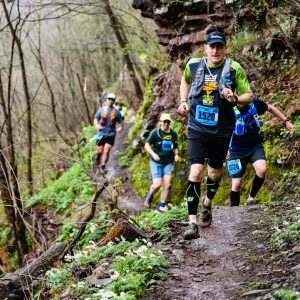Groundhog poop, also known as scat, is typically dark brown or black in color and has a cylindrical shape with tapered ends. The size of the droppings can vary, but they are generally around 3/8 to 3/4 of an inch in diameter and 1 to 2 inches in length. The texture of groundhog poop is often firm and compact, resembling small pellets or elongated capsules. When fresh, the droppings may appear moist and shiny, but they can dry out and become more brittle over time.
In terms of odor, groundhog poop may have a musky or earthy smell, similar to that of other wild animal droppings. It is important to note that the appearance of groundhog poop can be influenced by factors such as diet, hydration, and the environment in which the animal lives. Therefore, while the general characteristics described above are typical of groundhog scat, variations may occur.
Groundhog poop is often found in clusters or piles, as these animals tend to defecate in specific areas known as latrines. These latrines are commonly located near the entrance of the groundhog’s burrow or along its foraging paths. By recognizing the appearance and location of groundhog poop, individuals can identify the presence of these animals and take appropriate measures to address any related issues.
Key Takeaways
- Groundhog poop is small, cylindrical, and dark brown in color with a strong odor.
- Look for groundhog poop near their burrows, feeding areas, and along their travel paths.
- Groundhog poop can carry diseases such as leptospirosis and tularemia, so it’s important to handle it with caution.
- Use gloves and a mask when cleaning up groundhog poop, and disinfect the area thoroughly afterwards.
- To prevent groundhog infestations, remove food sources, seal off entry points, and use repellents around your property.
Where to Find Groundhog Poop
Groundhog poop can be found in various outdoor locations where these animals are active. One common area to find groundhog poop is near their burrows, as they often create latrines close to their den entrances. These latrines serve as designated areas for the groundhogs to deposit their droppings, helping to keep their living spaces clean and organized.
In addition to burrow entrances, groundhog poop may also be found along their foraging paths, which are typically located near areas with abundant vegetation. As herbivores, groundhogs primarily feed on grasses, clover, and other green plants, so their droppings are often found in grassy or wooded areas where they forage for food.
It is important to note that groundhog poop can also be found in residential areas, particularly if these animals have established a presence in yards, gardens, or under decks and sheds. In such cases, homeowners may come across groundhog droppings near these structures or in areas where the animals have been feeding.
Health Risks Associated with Groundhog Poop
While groundhog poop may not pose as significant of a health risk as that of some other wildlife species, it is still important to exercise caution when coming into contact with it. Groundhog droppings can potentially carry harmful bacteria and parasites, which can pose health risks to humans and pets if proper precautions are not taken.
One of the primary concerns associated with groundhog poop is the potential transmission of diseases such as leptospirosis and tularemia. Leptospirosis is a bacterial infection that can be spread through contact with contaminated water or soil, while tularemia is a bacterial disease that can be transmitted through direct contact with infected animals or their droppings.
In addition to bacterial infections, groundhog poop may also harbor parasites such as roundworms and tapeworms, which can infect humans and pets if ingested. These parasites can cause a range of health issues, including gastrointestinal problems and other complications.
To minimize the risk of exposure to harmful pathogens present in groundhog poop, it is important to avoid direct contact with the droppings and to use proper protective gear, such as gloves and masks, when cleaning up contaminated areas. Additionally, thorough handwashing and disinfection of affected surfaces are essential steps in reducing the risk of disease transmission.
How to Clean Up Groundhog Poop
| Methods | Effectiveness | Cost |
|---|---|---|
| Use a shovel and gloves | High | Low |
| Use a pressure washer | Medium | Medium |
| Use a disinfectant spray | Low | Low |
When it comes to cleaning up groundhog poop, it is important to approach the task with caution and thoroughness. Before beginning the cleanup process, it is advisable to wear protective gear such as gloves, a mask, and long sleeves to minimize direct contact with the droppings and reduce the risk of exposure to harmful pathogens.
To clean up groundhog poop effectively, start by using a shovel or scoop to carefully collect the droppings and place them in a sturdy plastic bag. Be sure to seal the bag securely to prevent any potential contamination or spread of pathogens. After removing the droppings, thoroughly clean and disinfect the affected area using a solution of water and bleach or a commercial disinfectant.
It is important to note that proper disposal of the contaminated materials is crucial in preventing further health risks. Dispose of the sealed plastic bag containing the groundhog poop in an outdoor trash bin with a secure lid to prevent access by other animals. After completing the cleanup process, be sure to remove and wash any clothing or gear that may have come into contact with the droppings.
In cases where groundhog poop is found in indoor areas such as basements or crawl spaces, it is recommended to ventilate the area and use appropriate cleaning methods to ensure thorough removal of the droppings and any associated contaminants. If necessary, consider seeking professional assistance for more extensive cleanup efforts.
Preventing Groundhog Infestations
Preventing groundhog infestations involves implementing measures to deter these animals from establishing a presence on your property. One effective strategy is to make the environment less attractive to groundhogs by removing potential food sources and shelter. This can include keeping grass and vegetation trimmed, removing fallen fruits and vegetables from gardens, and sealing off potential entry points under decks and sheds.
Installing fencing around gardens and other vulnerable areas can also help prevent groundhogs from accessing these spaces. Use sturdy wire mesh or hardware cloth to create a barrier that extends at least a foot below ground to deter burrowing attempts. Additionally, consider using deterrents such as motion-activated sprinklers or ultrasonic devices to discourage groundhogs from frequenting your property.
Another important aspect of preventing groundhog infestations is addressing any existing burrows on your property. Fill in abandoned burrows with soil and tamp it down firmly to discourage reoccupation by groundhogs or other wildlife. Regularly inspect your property for signs of new burrowing activity and take prompt action to fill in any new holes that may appear.
By taking proactive measures to make your property less appealing to groundhogs and addressing potential entry points and burrows, you can reduce the likelihood of infestations and minimize the need for cleanup efforts related to groundhog poop.
The Importance of Proper Disposal of Groundhog Poop

Proper disposal of groundhog poop is essential for minimizing health risks and preventing potential environmental contamination. When cleaning up groundhog droppings, it is important to seal them in a sturdy plastic bag before disposing of them in an outdoor trash bin with a secure lid. This helps prevent access by other animals and reduces the risk of spreading harmful pathogens.
In addition to proper disposal of groundhog poop, it is important to take steps to prevent further contamination of the affected area. Thoroughly clean and disinfect surfaces where the droppings were found using a solution of water and bleach or a commercial disinfectant. This helps eliminate any remaining pathogens and reduces the risk of disease transmission.
By following proper disposal procedures and thorough cleaning practices, you can help protect yourself, your family, and your pets from potential health risks associated with groundhog poop. Additionally, taking these precautions contributes to maintaining a safe and healthy environment for both humans and wildlife.
Understanding Groundhog Behavior and Poop Patterns
Understanding groundhog behavior and poop patterns can provide valuable insights into managing potential infestations and addressing related issues. Groundhogs are herbivorous rodents that are known for their burrowing behavior and preference for vegetated areas where they can find ample food sources.
As part of their natural behavior, groundhogs create latrines near their burrow entrances where they deposit their droppings. These latrines serve as designated areas for waste disposal, helping to keep their living spaces clean and organized. By recognizing these patterns, individuals can identify areas where groundhog poop is likely to be found and take appropriate measures to address any related concerns.
In addition to latrine locations, understanding groundhog behavior can help predict their movements and foraging habits. Groundhogs are known for their voracious appetites for grasses, clover, and other green plants, so areas with abundant vegetation are likely places where their droppings may be found. By being aware of these patterns, individuals can take proactive steps to prevent infestations and minimize potential cleanup efforts related to groundhog poop.
Overall, understanding groundhog behavior and poop patterns can provide valuable information for effectively managing interactions with these animals and addressing any associated challenges. By being aware of their habits and preferences, individuals can take proactive measures to prevent infestations and minimize potential health risks related to groundhog poop.
If you’re interested in learning more about the habits and behaviors of groundhogs, you might want to check out this article on belairwestwood.com. This website offers valuable information on wildlife and pest control, including insights into groundhog behavior and how to deal with groundhog poop in your yard. It’s a great resource for anyone looking to better understand these furry critters and how to coexist with them in their natural habitat.
FAQs
What does groundhog poop look like?
Groundhog poop is typically small, cylindrical, and dark brown in color. It may also have a slightly tapered or pointed end.
Where can groundhog poop be found?
Groundhog poop can be found near their burrows, along their travel paths, and in areas where they forage for food. They often create latrines near their burrows.
Is groundhog poop dangerous?
Groundhog poop can potentially carry diseases and parasites, so it’s important to avoid direct contact with it and to properly clean up any areas where it is found.
How can I safely clean up groundhog poop?
To safely clean up groundhog poop, wear gloves and use a shovel or scoop to carefully remove the droppings. Dispose of the poop in a sealed plastic bag and then wash your hands thoroughly with soap and water.
What should I do if I find groundhog poop in my yard?
If you find groundhog poop in your yard, it’s a good idea to remove it and take steps to deter groundhogs from frequenting the area, such as securing trash cans and removing sources of food and shelter.





